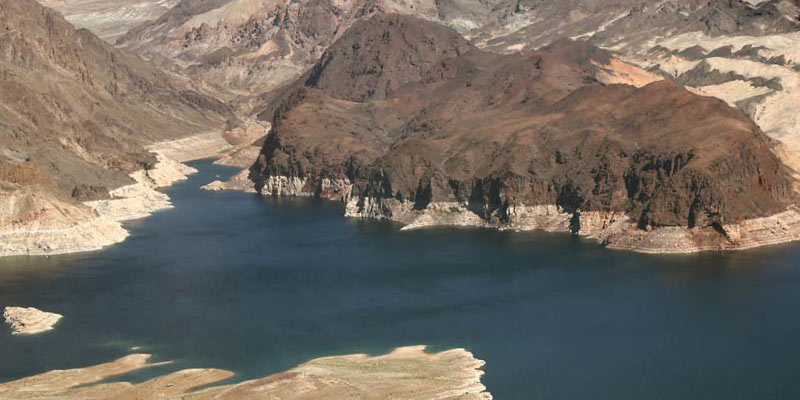
For 40 million Americans, the Colorado River is a life source. Stretching 1,450 miles from the Rocky Mountains to the Gulf of California, the river supplies drinking water, agricultural irrigation, and even electricity from its hydroelectric dams. But for the past few decades, the Colorado River has been under severe threat from both climate change and overuse.
Fortunately, new educational information is available thanks in part to two Nelson Institute students: Ben Lebowitz, a master’s candidate in the environment and resources program, and Cyrus Gordon-Hill who is graduating in May 2023 with an environmental studies certificate. Alongside UW emeritus professor Brad Barham and California-based freelance videographer Robert Marcos, the team developed the Colorado River Basin Project, a series of educational videos and modules designed to help instructors teach about the important water source, the challenges it faces, and the solutions that could save it.
“From the beginning of the project, our own narrative was ‘discovery,’ ” says Lebowitz. “By keeping our minds open to new perspectives and learning opportunities, we were able to build relationships while also building a story about what is going on in the Colorado River Basin.”
The project’s launch couldn’t have been timed better. In early April 2023, the Colorado River crisis reentered national media as the presidential administration proposed a first-of-its-kind change in how water from the river is allotted. The plan would reduce the water delivered to three key states — California, Arizona, and Nevada — evenly by up to 25 percent. One alternative proposal was to take no action, which would likely result in a “deadpool,” or when a reservoir drops so low it can no longer flow downstream. Another was to make cuts based on the states’ water rights “seniority,” or those who have used water from the Colorado River the longest (in this case, California). That plan, however, would almost eliminate the drinking water carried to Phoenix and Tucson.
While the governmental arm focuses on temporary fixes for the present, Lebowitz, Gordon-Hill, and Barham have focused the Colorado River Basin Project on the future. “We could never have hoped to capture all of the issues present,” Lebowitz says, “but our project is an attempt to bring some of the biggest themes to light.” The project includes four modules, each tackling the Colorado River crisis from different lenses: an overview of the Colorado River and the key players who have shaped it; a historical look at the river, including tribal water rights; the economics of water, including agricultural and urban impacts; and finally, policy options to stop the crisis, from short-term conservation options to longer-term adaptive management practices.
“What a remarkable ‘capstone’ project for my 35-year career at UW–Madison, traveling through the upper and lower Basins of the Colorado River with our great team, learning from so many knowledgeable people, jumping into the Colorado’s tributaries, and puzzling over sustainable and equitable options for tribes, cities, rural communities,” Barham reflects. “I am so grateful that we have had the opportunity to discuss, discover, and now share what we learned along the way. I hope these videos are a tenth as valuable to others as making them was to us. If so, they will be worth a lot.”